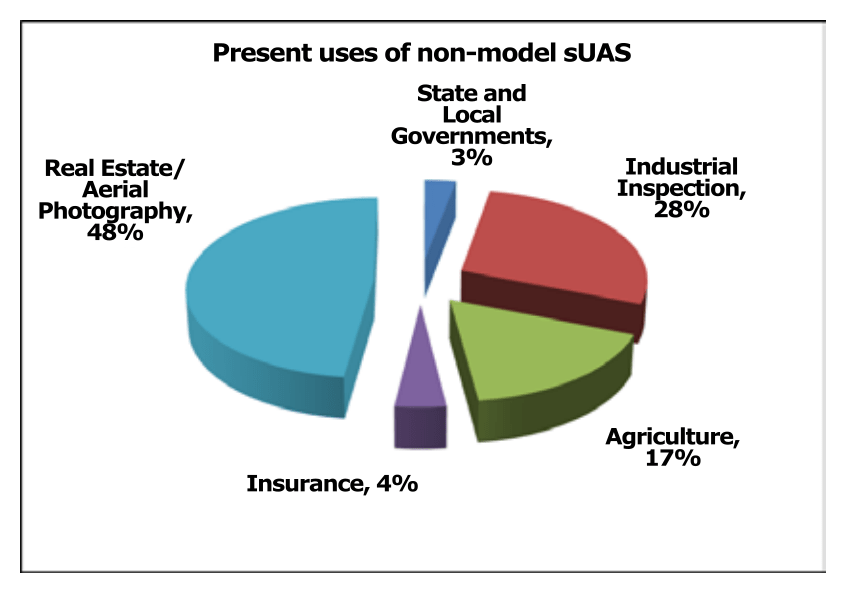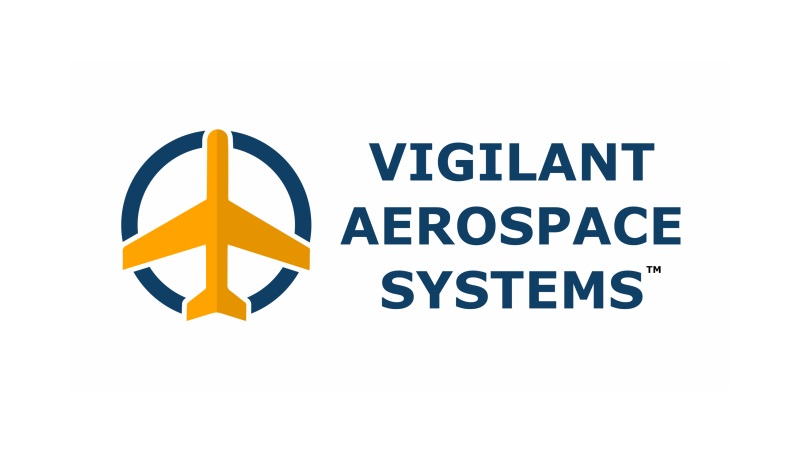The FAA has released its latest Aerospace Forecast for 2018-2038 and the new forecast reports that the commercial sUAS market is growing faster than expected with more than 110,604 commercial sUAS registered by the end of 2017.
Last year, we forecasted that the non-model sector would comprise approximately 108,000 aircraft in 2017, a growth rate exceeding 150% from the base of 42,000 in 2016. Actual data indicate there were 110,604 UAS registered at the end of 2017

In addition, the FAA expects the growth of the commercial sector to continue to accelerate:
The non-model sector is primarily commercial in nature. It is very dynamic and appears to be at an early stage of growth. Unlike the model sector, we anticipate that the growth rate in this sector will continue to accelerate over the next few years. Additional commercial uses will likely result from both the clarity that Part 107 has provided and the possibilities for waivers, which will likely facilitate further growth in the sector
The forecast also projects that the commercial sUAS fleet will be four times larger than the current size, reaching more than 450,000 aircraft by 2022. This number is similar to the projections from the 2017 forecast, but indicates that the current growth rate is accelerated from previous expectations. The registration trend indicated an average of over 1,000 commercial unmanned aircraft registered each week since registration opened in April 2016.
It is extremely difficult to put a lower bound on the growth of the non-model sector due to its composition (i.e. consumer vs. professional grades) and the varying business opportunities and growth paths. As non-model aircraft become operationally more efficient and safe, battery life expands, and regulatory constraints are reduced, new business models will begin to develop, thus enhancing robust supply-side responses. These responses, in turn, will pull demand forces that are presently latent. As a result, we provide a likely or base scenario together with the enormous potential embodied in the “high” scenario, representing cumulative annual growth rates of 33% and 46%, respectively

The FAA analysis of commercial UAS in the latest report shows that the industries utilizing them the most had not changed much from the previous year:
Non-model UAS are primarily used for aerial imaging and data collection, including real estate photography (48%), industrial and utility inspection (28%), and agricultural applications (17%), including crop inspection. Increasingly, state and local governments are using UAS for emergency services, including search and rescue operations, and presently employ around 3% of all non-model UAS. As the sector grows, there will be many more non-model UAS in use.
The forecast also considers the trends in Part 107 remote pilot certifications (RPCs):
RPCs [Remote Pilot Certificates] are set to experience tremendous growth following the growth trends of the non-model sUAS sector. Starting from the base of 73,673 RPCs in 2017, non-model activities may require over 300,000 new remote pilots in 5 years, providing tremendous opportunities for growth in employment associated with commercial activities of the UAS.
The UAS segment of the new forecast also includes an optimistic commentary on innovation in the industry:
The forecasts reported in this section are driven primarily by the assumption of the continuing evolution of the regulatory environment, the commercial ingenuity of manufacturers and operators, and underlying demand, including business models. These drivers will continue to advance safe integration of UAS into the NAS.
Vigilant Aerospace is encouraged by the latest forecast and especially by the FAA’s variety of approaches to forecasting, robustness of analysis and overall optimism for the potential of the commercial UAS industry.
Read the Unmanned Aircraft Systems section of the 2018-2038 Aerospace Forecast [PDF]: “Unmanned Aircraft Systems – FAA Aerospace Forecast FY 2018-2038”
Get the full forecast report [PDF]: “FAA Aerospace Forecast FY 2018-2038”
About the annual FAA aerospace forecast report:
From the website:
The FAA Aerospace Forecast 2018-38 is developed to support budget and planning needs of the FAA. The forecasts are developed using statistical models to explain and incorporate emerging trends of the different segments of the aviation industry. This year’s document contains updated forecasts for US airline traffic and capacity, FAA workload, General Aviation activity and pilots, as well as Commercial Space and Unmanned Aircraft System (UAS) fleet and remote pilots. For more information, or to view past forecast reports, visit
www.FAA.gov/data_research/aviation/aerospace_forecasts  In addition, the FAA expects the growth of the commercial sector to continue to accelerate:
In addition, the FAA expects the growth of the commercial sector to continue to accelerate:
 The FAA analysis of commercial UAS in the latest report shows that the industries utilizing them the most had not changed much from the previous year:
The FAA analysis of commercial UAS in the latest report shows that the industries utilizing them the most had not changed much from the previous year:

